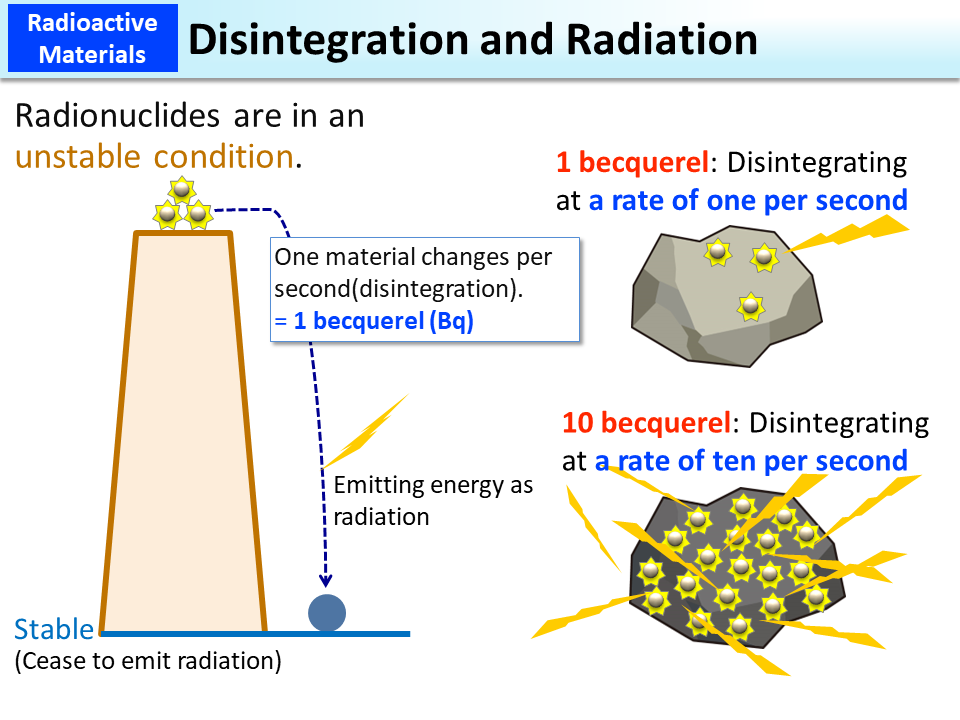Disintegration and Radiation
A nucleus of a radionuclide is energetically unstable. In order to become stable, it releases extra energy in the form of radiation.
Becquerel is a unit used to quantify radiation intensity. One becquerel is defined as an amount that “one nucleus changes (disintegrates) per second.” Since nuclei often emit radiation during disintegration, the becquerel is used as a unit to express the ability to emit radiation. In a rock with 1 Bq of radioactivity, for example, each nucleus of the radionuclide contained in the rock will disintegrate per second. 10 Bq means that 10 nuclei will disintegrate per second.
Once nuclei of a radionuclide disintegrate and the radionuclide becomes stable by emitting radiation, it will no longer emit radiation. Some types of radionuclides repeat disintegration multiple times until becoming stable.
(Related to p.10 of Vol. 1, “Parent and Daughter Nuclides”)
- Included in this reference material on March 31, 2013
- Updated on March 31, 2019

